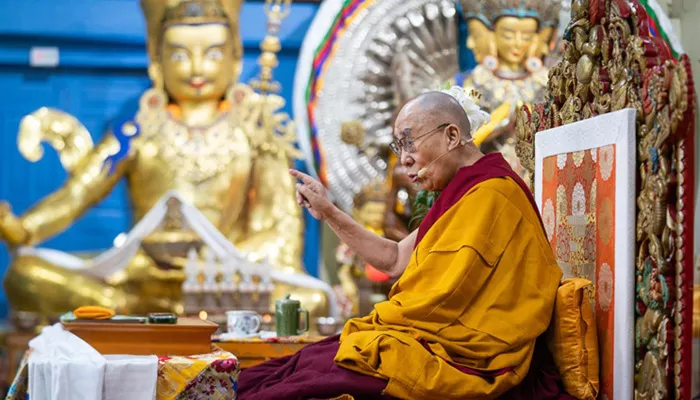The Dalai Lama is one of the most well-known Buddhist leaders in the world. He is the spiritual head of Tibetan Buddhism and is respected by many for his teachings on compassion, peace, and wisdom. People often ask if the Dalai Lama follows Mahayana or Hinayana Buddhism. To answer this question, we first need to understand what these terms mean.
What are Mahayana and Hinayana Buddhism?
Origins of Theravada and Hinayana Buddhism
Hinayana is a term that was historically used to describe early forms of Buddhism. However, it is considered a negative or less respectful term in modern times. The correct and respectful name for this tradition is Theravada Buddhism. Theravada means “Teaching of the Elders” and is the oldest surviving Buddhist school. It is mostly practiced in countries like Sri Lanka, Thailand, and Myanmar.
Theravada focuses on the original teachings of the Buddha and aims for personal enlightenment, often called arhatship.
The Rise of Mahayana Buddhism
Mahayana means “Great Vehicle.” It developed later than Theravada and became popular in countries such as China, Japan, Korea, and Tibet. Mahayana Buddhism focuses on the ideal of the Bodhisattva — a person who seeks enlightenment not only for themselves but also for the sake of all beings. Compassion and helping others are key values in this tradition.
Mahayana offers a broader path with more teachings and scriptures compared to Theravada. It emphasizes universal salvation and the possibility for everyone to achieve Buddhahood.
Which Tradition Does the Dalai Lama Follow?
The Dalai Lama and Tibetan Buddhism
The Dalai Lama is the spiritual leader of Tibetan Buddhism. Tibetan Buddhism is a branch of Mahayana Buddhism but also includes elements of Vajrayana, often called Tantric Buddhism. Vajrayana is sometimes seen as a special path within Mahayana, offering advanced methods for quick enlightenment.
Because Tibetan Buddhism is part of Mahayana, the Dalai Lama follows Mahayana teachings. His teachings emphasize compassion, wisdom, and the Bodhisattva ideal, which are core Mahayana values.
Why Not Hinayana or Theravada?
The Dalai Lama is not part of the Theravada tradition, which is sometimes confused with Hinayana. Theravada is practiced mainly in Southeast Asia, while Tibetan Buddhism is in the Himalayan region. They have different rituals, texts, and goals.
While Theravada focuses on individual liberation through strict meditation and discipline, Tibetan Mahayana Buddhism combines philosophy, ritual, and meditation to help all beings reach enlightenment.
Key Differences Between Mahayana and Theravada Buddhism
Focus on Enlightenment
Theravada Buddhism teaches that enlightenment is achieved by becoming an arhat, someone who has freed themselves from suffering and the cycle of rebirth. It is a personal goal.
Mahayana Buddhism, followed by the Dalai Lama, teaches the Bodhisattva path. This path encourages practitioners to delay their own final enlightenment to help others achieve theirs first. The goal is Buddhahood for all beings.
Scriptures and Teachings
Theravada relies mainly on the Pali Canon, which contains the earliest teachings of the Buddha. Mahayana adds many more sutras (scriptures), such as the Prajnaparamita Sutras and the Lotus Sutra, which include teachings on emptiness and compassion.
Practice and Rituals
Theravada practice is often simpler and focuses on meditation, morality, and monastic life. Mahayana, especially Tibetan Buddhism, includes many rituals, visualizations, mantras, and meditation techniques to aid spiritual growth.
What Does the Dalai Lama Teach?
Compassion and Wisdom
The Dalai Lama teaches that compassion and wisdom are the two wings of Buddhism. Compassion helps us connect to others, and wisdom helps us understand the true nature of reality. Both are necessary to walk the Mahayana path.
The Bodhisattva Ideal
He encourages people to develop the Bodhisattva mind, which is the wish to free all beings from suffering. This teaching is very different from the individual-focused goal in Theravada.
Modern Approach
The Dalai Lama often blends ancient Buddhist teachings with modern science and human rights. He promotes peace, kindness, and respect for all life, which resonates with Mahayana values of universal care.
Conclusion
In summary, the Dalai Lama follows the Mahayana tradition, specifically Tibetan Buddhism, which includes Vajrayana practices. He is not part of Hinayana or Theravada Buddhism. His teachings focus on compassion, wisdom, and the Bodhisattva ideal, all central to Mahayana Buddhism.

